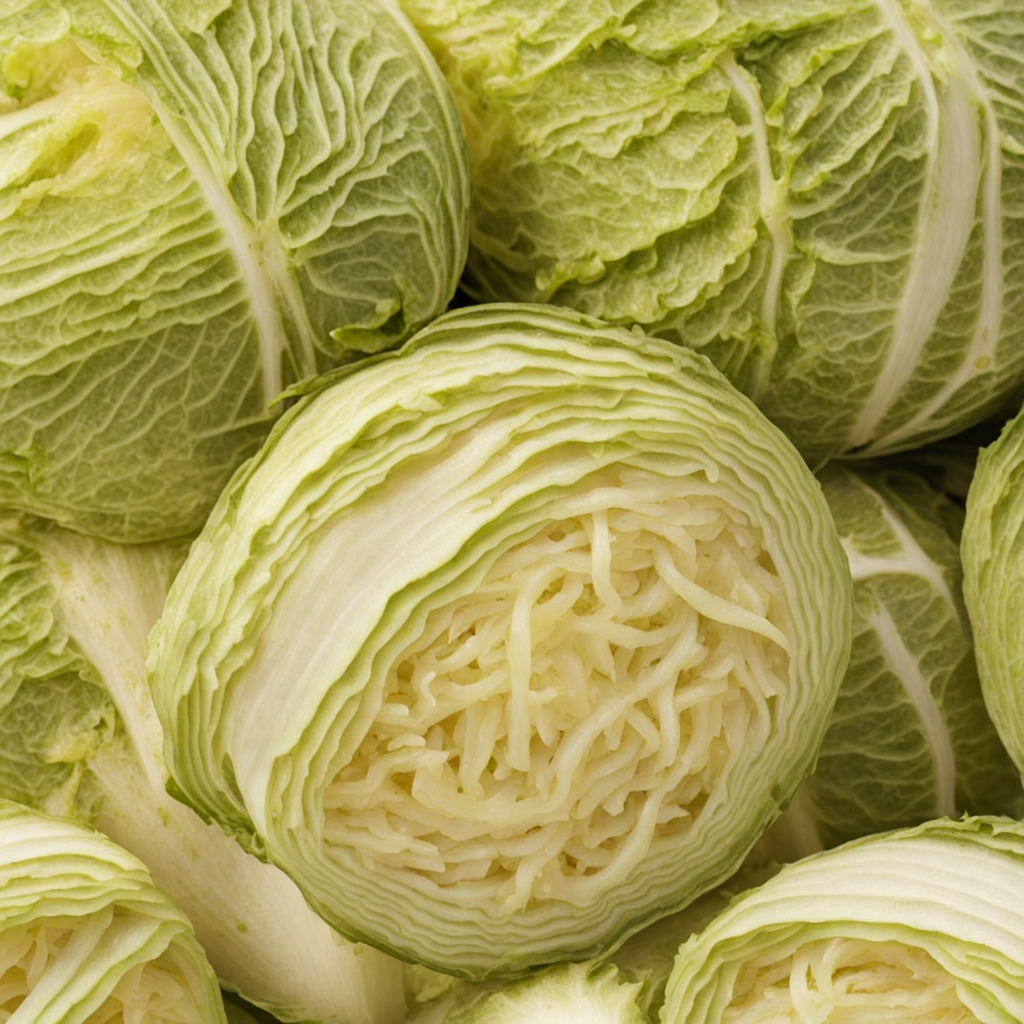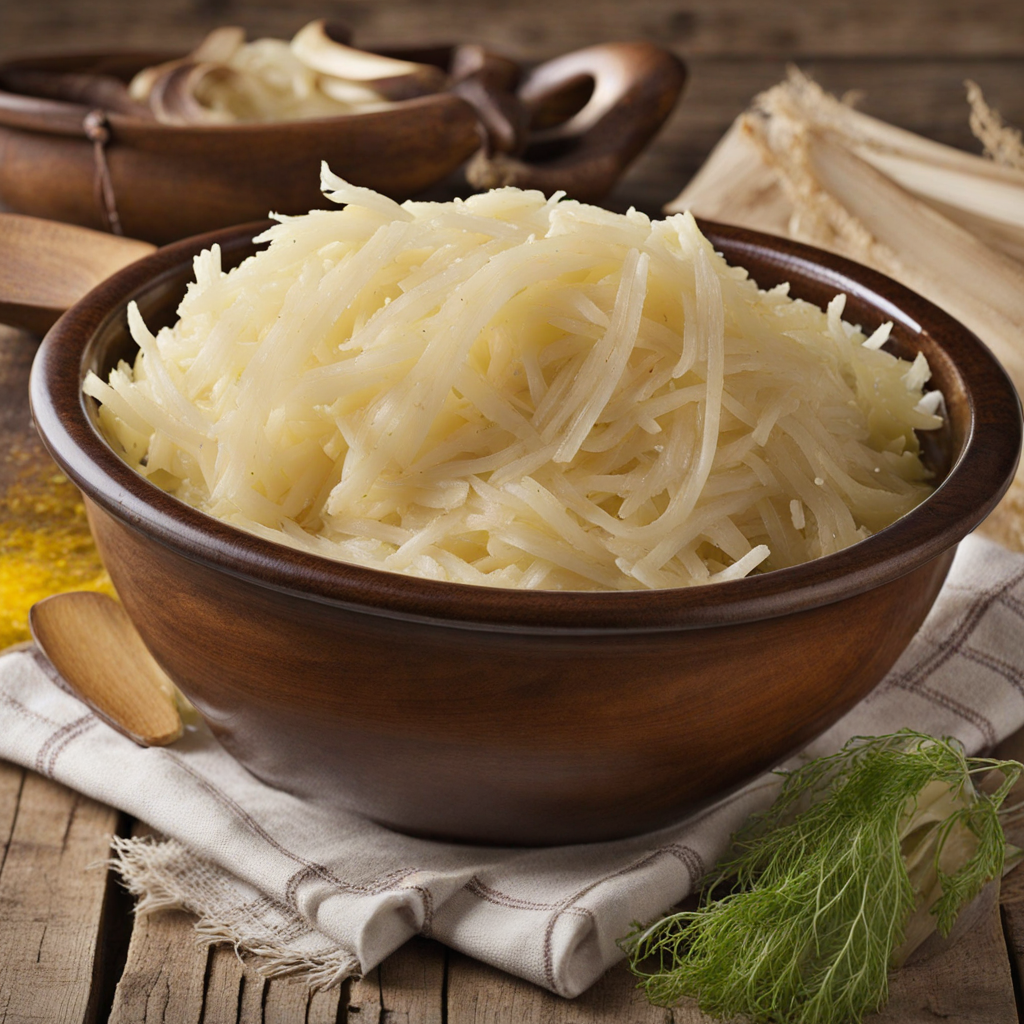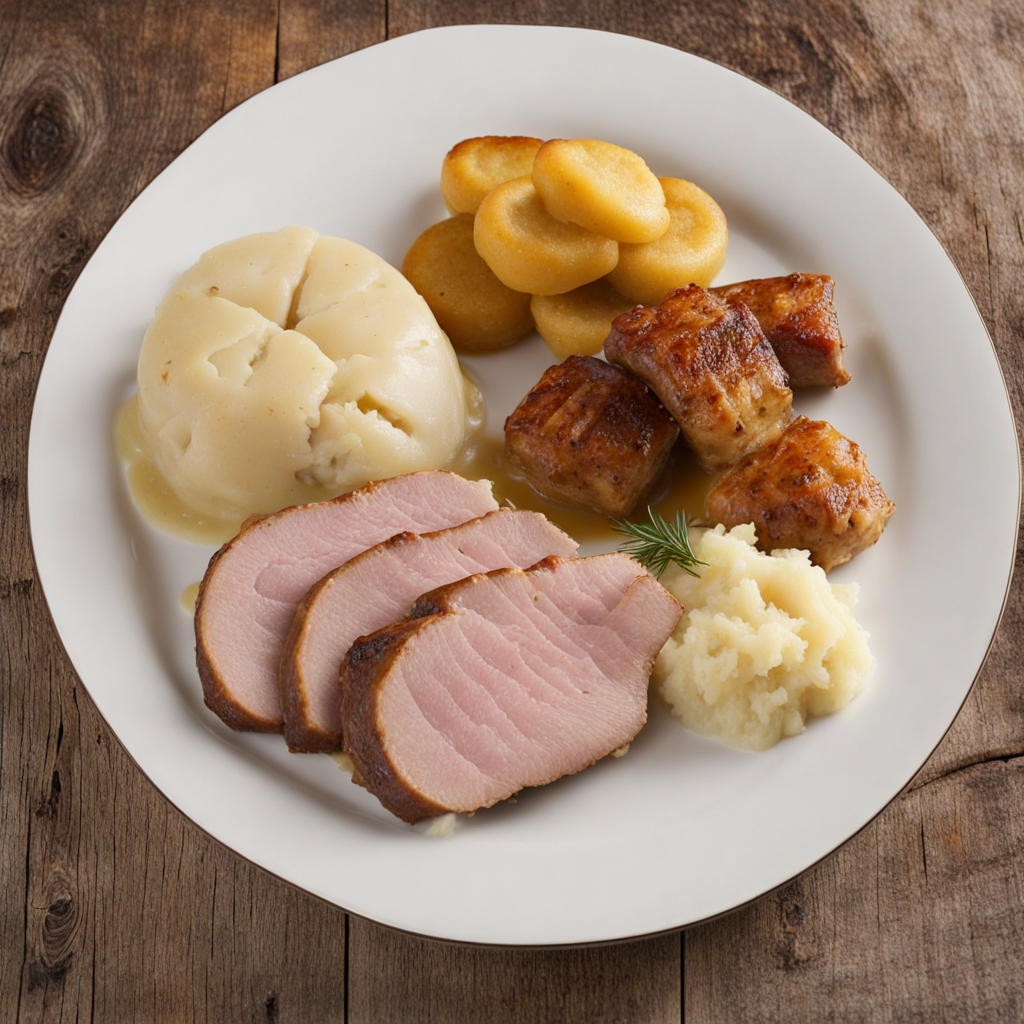Sauerkraut
Sauerkraut, a traditional dish hailing from Austria, is a fermented cabbage preparation that embodies the essence of tangy and savory flavors. The process of making sauerkraut involves finely shredding white cabbage, which is then mixed with salt and left to ferment for several weeks. This fermentation not only preserves the cabbage but also imparts a distinctive sour taste that is both refreshing and rich in probiotics. The texture is crisp yet tender, making it a harmonious addition to many dishes or delightful on its own. In Austria, sauerkraut is often enjoyed as a side dish, complementing hearty meals like sausages, schnitzels, or roasted meats. It serves as a perfect counterbalance to richer flavors, enhancing the overall dining experience with its sharp acidity. The dish can also be transformed into delicious recipes such as sauerkraut soup or served atop a crispy potato pancake, showcasing its versatility and ability to elevate various cuisines. Beyond its delicious taste, sauerkraut is celebrated for its nutritional benefits, packed with vitamins C and K, as well as dietary fiber. The fermentation process enriches it with gut-friendly bacteria, making it a popular choice for health-conscious individuals. As you explore the culinary landscape of Austria, indulging in sauerkraut offers a unique opportunity to savor a dish rooted in tradition, while experiencing the delightful interplay of flavors and health benefits it brings to the table.
How It Became This Dish
The History of Sauerkraut: A Tangy Journey from Austria and Beyond Origin and Early Beginnings Sauerkraut, a fermented cabbage dish known for its distinctive sour flavor, has a history that stretches back thousands of years, with roots tracing back to ancient China. The earliest records of fermented vegetables date back to around 3000 B.C. in China, where cabbage was fermented in rice wine. However, it is in Europe, particularly in the regions of what is modern-day Austria and Germany, that sauerkraut as we know it truly developed and became culturally significant. The term "sauerkraut" itself is derived from the German words "sauer," meaning sour, and "kraut," meaning cabbage. By the Middle Ages, sauerkraut was a staple among the peasant classes in Europe, and its popularity spread throughout the continent. The method of fermentation was not merely for flavor; it was a pivotal technique for preserving food through harsh winters, allowing people to store cabbage for months without spoilage. Cultural Significance in Austria In Austria, sauerkraut has been more than just a food; it has been woven into the fabric of the nation’s culinary identity. The Austrians embraced sauerkraut not only for its practicality but also for its nutritional benefits. Rich in vitamins C and K, sauerkraut became a valuable food source, particularly during the long winters when fresh vegetables were scarce. It was often served as a side dish alongside hearty meats, complementing the rich flavors prevalent in Austrian cuisine. The dish is traditionally associated with several cultural practices and celebrations. For example, it is commonly served at New Year’s celebrations, symbolizing wealth and prosperity for the coming year. The belief is that eating sauerkraut will bring good luck, a notion that echoes through various cultures that celebrate the New Year with cabbage dishes. Sauerkraut in Austrian Cuisine In Austria, sauerkraut is often prepared with a variety of spices and ingredients to enhance its flavor. It may be cooked with juniper berries, caraway seeds, and bacon, creating a dish that is rich and complex. This preparation method is reflective of the Austrian approach to food, which emphasizes hearty ingredients and robust flavors. Sauerkraut is frequently served with traditional dishes such as Wiener Schnitzel, sausages, and roast pork, making it an integral part of meals across the country. The dish is also featured in many regional variations throughout Austria, reflecting local tastes and agricultural practices. For example, in the alpine regions, sauerkraut might be paired with game meats, while in the flat plains of eastern Austria, it might accompany dishes centered around poultry or pork. The Journey Through Time: From Local to Global As the Austro-Hungarian Empire expanded in the 19th century, so too did the culinary traditions of Austria, including sauerkraut. With the movement of peoples across borders, sauerkraut found its way into neighboring countries and beyond. German immigrants carried the tradition to America in the 19th century, where it became a staple in the diets of many, particularly among German-American communities. During World War I, sauerkraut faced a brief period of disrepute in the United States as anti-German sentiment soared. The name was changed to "liberty cabbage" in an attempt to distance it from its German roots. However, the dish's popularity eventually rebounded, and today it is celebrated as an essential component of many American dishes, particularly in regions with large German heritage, such as the Midwest. In the 20th century, sauerkraut experienced a resurgence in health food circles due to its probiotic properties, which promote gut health. As the fermentation trend gained traction, sauerkraut was embraced not just as a culinary delight but also as a health food, leading to a variety of artisanal and gourmet sauerkraut products emerging on the market. Modern Interpretations and Global Variations Today, sauerkraut is enjoyed worldwide, and its preparation has evolved to include a myriad of flavors and styles. In Austria, traditional recipes still hold strong, but modern chefs are beginning to experiment with fusion dishes, incorporating global flavors and ingredients. For example, sauerkraut can be found in gourmet tacos, served alongside Asian-inspired dishes, or even incorporated into upscale salads. Moreover, the craft beverage movement has also embraced sauerkraut, with some breweries producing beers that feature sauerkraut as an ingredient, adding an unexpected twist to traditional brews. This innovative approach reflects the ongoing evolution of sauerkraut in contemporary cuisine, ensuring its place in the culinary landscape for generations to come. Conclusion: The Legacy of Sauerkraut From its origins in ancient China to its beloved status in Austrian cuisine and beyond, sauerkraut represents a fascinating intersection of history, culture, and gastronomy. It stands as a testament to human ingenuity in food preservation and reflects the adaptability of culinary traditions over time. Sauerkraut's journey is not just about fermentation; it embodies the stories of the people who have made it part of their meals, celebrations, and lives. Whether eaten with hearty Austrian sausages or as a topping on a modern fusion dish, sauerkraut continues to thrive, reminding us of our shared culinary heritage and the power of food to bring people together across cultures and generations. As we savor this tangy delight, we partake in a tradition that has endured through centuries, bridging the past with the present and ensuring a vibrant future for this iconic dish.
You may like
Discover local flavors from Austria







